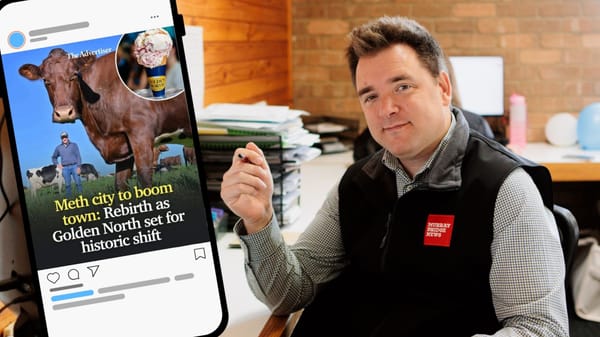Moorundi health service plans $22 million hub at former Nungas Club
For decades, Steve Sumner has wanted to bring together physical and mental health services for Murray Bridge’s Aboriginal people. He might be about to get his wish.

Locals support locals – that’s why this recent post is now free to read. Your support can help Murray Bridge News tell important local stories. Subscribe today.

A $22 million reimagining of the former Lower Murray Nungas Club would bring Aboriginal people and service providers together at a single site.
That’s the vision Steve Sumner, CEO of the Moorundi Aboriginal Community Controlled Health Service, has had for more than 20 years.
Now, despite the loss of so many elders and trailblazers along the way, it is finally getting closer to fruition.
Last December, the federal government announced a $9 million grant for stage one of the facility: construction of a primary health care clinic at the Adelaide Road site.
Locals support locals. Your support helps Murray Bridge News tell important local stories.
“Health underpins so many measures of a person’s life outcomes, and building this infrastructure (will provide) the platform to deliver quality health services,” Senator Malarndirri McCarthy said at the time.
“This huge investment in infrastructure across cities, towns and the bush will be a game changer in closing the gap and supporting community-controlled organisations to do what they do best.”
Stage two, not yet fully funded, would involve construction of a community centre, cafe and other amenities.
Together, the two buildings would create a safe, welcoming space where Aboriginal and Torres Strait Islander people could seek care for their health and wellbeing issues – something that could produce meaningful progress towards closing the gap in health outcomes between Indigenous and non-Indigenous locals.

The centre will feature telehealth facilities, four GP consulting rooms, and space for registered nurses and allied health professionals.
It will also be designed in such a way that, should there be another outbreak of infectious disease – like the COVID-19 pandemic – staff will be able to isolate patients at one end of the building.
“The community health centre will be on one side and the community centre on the other,” Mr Sumner said.
“You can’t fix your physical health if your mental, spiritual and cultural health aren’t well.”

Office and administration manager Bec Fidge said putting all of Moorundi’s staff under one roof would give the clinic a greater capacity to bring in specialists from outside, and to call on each other if mental health or other issues cropped up during a consultation.
Having that capacity would also mean fewer trips to Adelaide for patients who sometimes had to travel 2.5 hours to a 15-minute appointment, transport coordinator David Crompton said.
There was also the big picture to consider.
“Murray Bridge is not getting smaller, it’s getting bigger,” Ms Fidge said.
“The community as a whole is going to benefit from what Moorundi is going to bring to the table.”
Twenty-year journey started at Francesco’s Restaurante
The facility’s construction will be the culmination of more than 20 years of planning by Mr Sumner and other Indigenous leaders.
It all started with a meeting at Francesco’s Restaurante in Murray Bridge – long since converted into a church – in 2002.
Only a couple of years earlier, the Howard federal government had made some noise about funding Aboriginal health services.
People came from all over Ngarrindjeri country for the meeting: from Victor Harbor, Kalparrin, Raukkan, Mannum and Meningie, Carters and Rigneys, Rankines, Kropinyeris and Kartinyeris, Gollans and Wilsons and many more.
Led by Carol Gaston, they came up with a hugely detailed plan to address local needs around substance misuse, ageing, diabetes and more.
“All eight groups wanted a community-controlled health service at the Nungas Club – basically everything you see now through Moorundi,” Mr Sumner said.
“It’s like this legacy I’ve had for 20 years, where I’ve had to really focus on and be true to what they wanted back then.
“You get on with life, but you’ve got this little thing burning inside, saying ‘at some stage you’ve got to get on with this’.”

A culturally appropriate, Ngarrindjeri-controlled health service operated out of the Nungas Club site between about 2003 and 2010, in partnership with Bridge Clinic.
Client numbers “went through the roof”, Mr Sumner said.
But in time, state priorities changed, the clinic was shut down and its services were absorbed back into the state health system.
A few years after that, Moorundi was established to fill the same role: bringing people together and delivering health services, first at a clinic on Clara Street, then one on Standen Street.
In time, SA Health and the National Indigenous Australians Agency came to the party, helping Moorundi expand to Wharf Road, Victor Harbor and Raukkan and grow to employ more than 40 staff.
Not all First Nations people chose to get health care through Moorundi, Mr Sumner said, but about 1600 had visited at least once during the past year.
“It’s amazing what you can do if you stay true to it,” Mr Sumner said.
“You’ve got to have a vision.
“People entrusted us with the responsibility to grow this business and make it work.”
- More information about Moorundi: www.moorundi.org.au.





